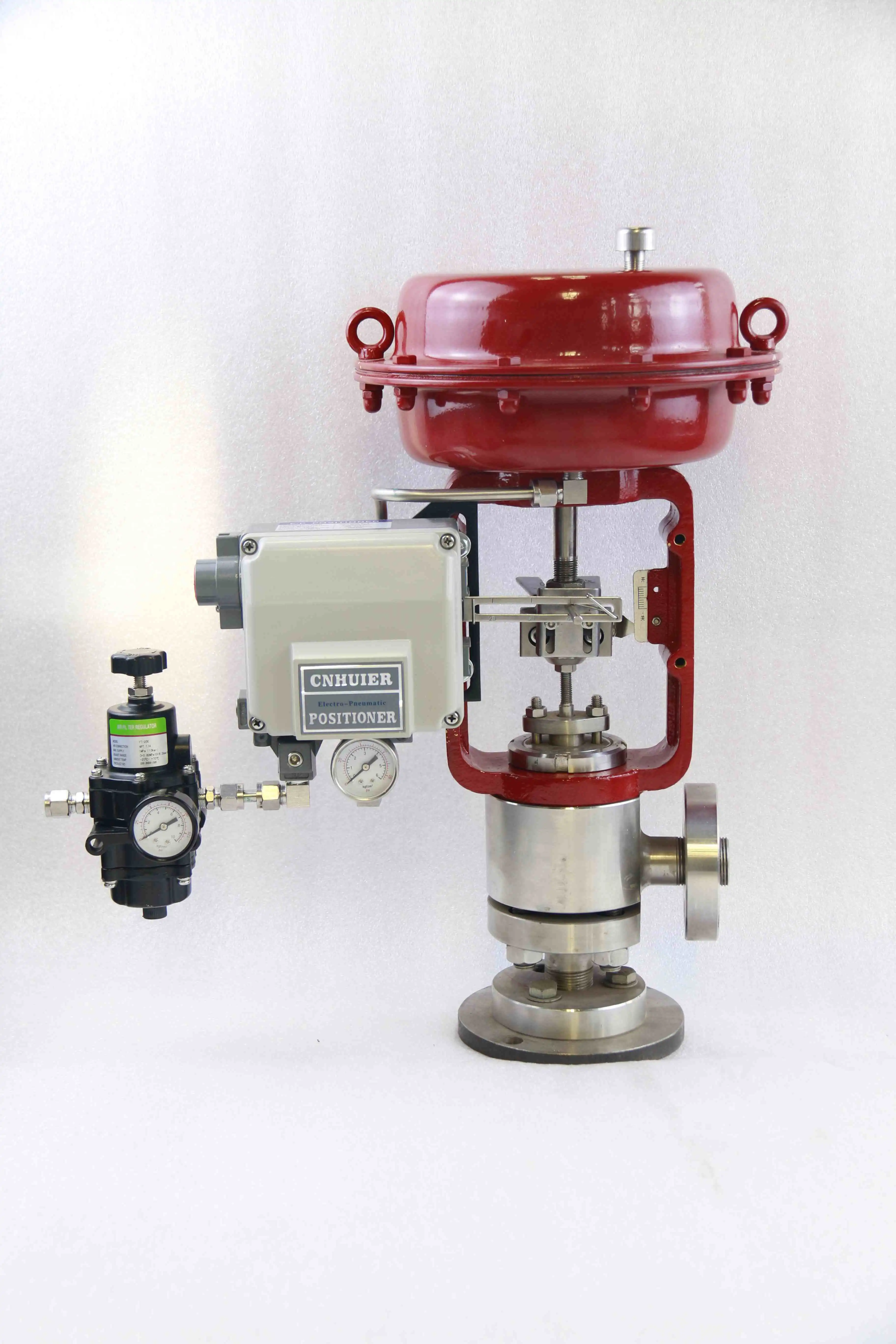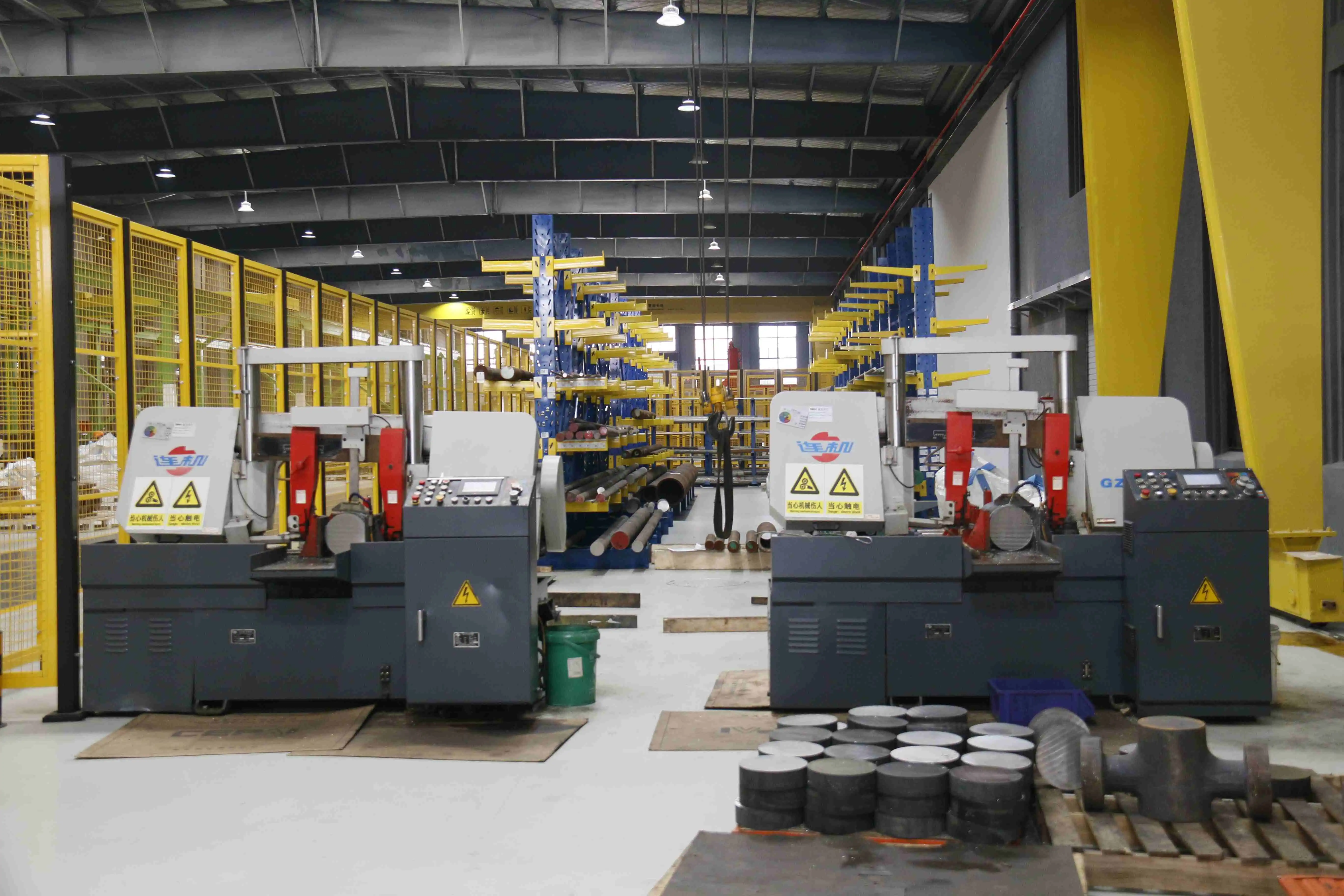The Future of Control Valves: Trends in Smart Technology and Automation
Industrial automation is experiencing unprecedented challenges as facilities struggle with unpredictable downtime, inefficient energy consumption, and the mounting pressure to integrate sustainable technologies. The control valve industry stands at a critical juncture where traditional mechanical solutions can no longer meet the demanding requirements of modern industrial processes. Control Valve technology is rapidly evolving to address these pain points, offering intelligent solutions that transform how industries approach fluid control systems. This comprehensive analysis explores the revolutionary trends shaping the future of control valve technology, from artificial intelligence integration to predictive maintenance capabilities that are reshaping industrial automation landscapes.
Smart Control Valve Technologies Revolutionizing Industrial Automation
The integration of Internet of Things (IoT) capabilities into modern Control Valve systems represents a fundamental shift from reactive to proactive maintenance strategies. Smart valve technologies are embedding sophisticated sensors directly into valve assemblies, enabling real-time monitoring of critical parameters including temperature, pressure, flow rates, and actuator performance. These intelligent systems communicate continuously with central control networks, providing operators with unprecedented visibility into valve operations and system health status. Digital valve positioners have emerged as cornerstone components in smart Control Valve architecture, offering capabilities that extend far beyond traditional position control functions. These advanced positioners incorporate self-diagnostic features that monitor valve stem travel, actuator response times, and internal friction characteristics. When abnormal conditions are detected, the system generates immediate alerts and provides detailed diagnostic information to maintenance teams. The implementation of 4-20mA current signals and 0-10V voltage signals ensures seamless integration with existing plant control systems while maintaining compatibility with legacy infrastructure.
-
Enhanced Diagnostic Capabilities and Performance Optimization

Modern Control Valve systems utilize advanced analytics to optimize performance parameters continuously. Machine learning algorithms analyze historical operating data to identify patterns that precede valve failures or performance degradation. These predictive insights enable maintenance teams to schedule interventions during planned shutdown periods, significantly reducing unplanned downtime costs. The technology also provides real-time optimization recommendations, adjusting control parameters to maintain peak efficiency while extending component lifespan. Temperature-sensitive applications particularly benefit from intelligent Control Valve technologies, especially in low-temperature environments ranging from -60°C to -20°C. Smart temperature monitoring systems track thermal cycling effects on valve components, predicting when sealing materials may require replacement or when thermal stress could compromise structural integrity. Advanced materials such as 316L stainless steel with specialized surface treatments ensure reliable operation under extreme conditions while providing extended service life.
Artificial Intelligence Integration in Control Valve Operations
Artificial intelligence is transforming Control Valve operations through sophisticated predictive maintenance algorithms that analyze multiple data streams simultaneously. AI systems process information from valve position sensors, actuator performance metrics, flow characteristics, and environmental conditions to create comprehensive operational profiles. These profiles enable predictive models to forecast potential failures weeks or months before they occur, allowing proactive maintenance scheduling that minimizes production disruptions. Machine learning capabilities extend beyond maintenance prediction to encompass real-time performance optimization. AI algorithms continuously adjust control parameters based on changing process conditions, ensuring optimal valve response characteristics while minimizing energy consumption. The technology monitors valve hysteresis, deadband characteristics, and response linearity, making automatic adjustments to maintain precise control accuracy throughout the valve's operational life.
-
Autonomous Valve Calibration and Self-Optimization
Advanced AI systems incorporate autonomous calibration capabilities that eliminate manual intervention requirements for routine maintenance procedures. Control Valve systems equipped with these technologies perform self-diagnostic routines during operational periods, identifying drift in calibration parameters and executing automatic corrections. This autonomous functionality ensures consistent performance while reducing maintenance labor requirements and eliminating human error factors in calibration procedures. The integration of digital twin technology with AI systems creates virtual representations of Control Valve assemblies that mirror real-world performance characteristics. These digital models continuously update based on operational data, enabling simulation of different operating scenarios and optimization of control strategies. Engineers can test proposed modifications or evaluate alternative operating parameters using the digital twin before implementing changes in actual systems, reducing risks and improving operational outcomes.
Predictive Maintenance Technologies Transforming Valve Management
Predictive maintenance represents a paradigmatic shift from time-based maintenance schedules to condition-based maintenance strategies. Companies are continuously adopting valve condition monitoring to maximize the productivity and safety of facilities, with demand for condition-monitoring technology expected to soar as companies aim to reduce unplanned downtime due to control valve failures. Modern Control Valve systems incorporate vibration monitoring, temperature sensing, and performance trending capabilities that provide early warning indicators of developing problems. Advanced diagnostic systems monitor multiple parameters simultaneously, including actuator torque requirements, valve stem friction characteristics, and sealing performance metrics. When these parameters deviate from established baseline values, the system generates progressive alert levels that guide maintenance decision-making processes. Critical alerts trigger immediate notifications to maintenance personnel, while advisory alerts provide trending information that supports long-term maintenance planning activities.
-
Condition Monitoring and Health Assessment Systems
Comprehensive condition monitoring systems integrate multiple sensor technologies to provide holistic assessments of Control Valve health status. Ultrasonic monitoring detects internal leakage conditions that may not be apparent through external inspection methods. Thermal imaging capabilities identify hot spots that could indicate internal friction problems or impending actuator failures. Pressure differential monitoring across valve assemblies provides insights into flow coefficient changes that may indicate internal fouling or erosion conditions. Real-time health assessment algorithms combine data from all monitoring systems to generate overall condition scores for individual Control Valve assemblies. These scores enable maintenance teams to prioritize intervention activities based on actual equipment condition rather than arbitrary time schedules. The scoring system also provides trending capabilities that help identify gradual performance degradation patterns, enabling proactive replacement or refurbishment activities before catastrophic failures occur.
Internet of Things (IoT) Connectivity in Modern Control Valve Systems
IoT connectivity transforms individual Control Valve assemblies into networked components of comprehensive industrial automation systems. Wireless communication protocols enable valve assemblies to transmit operational data to central monitoring systems without requiring additional wiring infrastructure. This connectivity facilitates remote monitoring capabilities that allow operators to assess valve performance from centralized control rooms or even remote locations. Cloud-based data storage and analytics platforms process vast amounts of operational data from distributed Control Valve networks, identifying system-wide trends and optimization opportunities. These platforms enable benchmarking of individual valve performance against fleet averages, highlighting underperforming units that may require attention. Advanced analytics identify correlations between operating conditions and valve performance, providing insights that support improved system design and operational strategies.
-
Remote Operation and Maintenance Capabilities
Remote operation capabilities enable operators to adjust Control Valve parameters and perform diagnostic procedures without physical access to equipment locations. This functionality proves particularly valuable in hazardous environments or remote installations where human access is limited or dangerous. Secure communication protocols ensure data integrity and prevent unauthorized access to critical control systems while enabling legitimate remote operations. AR-assisted maintenance capabilities integrate with IoT connectivity to provide technicians with real-time guidance during maintenance procedures. Technicians equipped with AR devices receive step-by-step instructions overlaid on their view of actual equipment, reducing maintenance time and improving procedure accuracy. Remote experts can provide guidance through AR interfaces, enabling complex repairs to be performed by local technicians with remote supervision from specialized personnel.

Market Growth and Industry Adoption Trends
The global Control Valve market is experiencing robust growth, with market size estimated at $10.0 billion in 2024 and projected to reach $13.30 billion by 2030, growing at a compound annual growth rate of 5.0%. This growth reflects increasing industrial automation adoption and the transition toward smart manufacturing technologies. Industries are recognizing the value proposition of intelligent Control Valve systems that provide operational efficiency improvements, maintenance cost reductions, and enhanced safety capabilities. The control valve market is expected to grow at a compound annual growth rate of 13% due to factors like increased automation, technological advancements, and a global focus on sustainable energy and infrastructure. Energy efficiency requirements and environmental regulations drive demand for precision control systems that minimize waste and optimize resource utilization. Control Valve technologies that provide accurate flow control and reduced fugitive emissions support compliance with increasingly stringent environmental standards.
-
Industrial Sector Applications and Adoption Patterns
Petrochemical and oil refining industries represent the largest market segments for advanced Control Valve technologies, driven by safety requirements and process optimization demands. These industries require valve systems capable of handling aggressive media, extreme temperatures, and high-pressure conditions while maintaining precise control accuracy. Power generation facilities increasingly adopt smart Control Valve systems to improve efficiency and reduce emissions, particularly in renewable energy applications where precise control enables optimal energy capture. Water treatment and municipal infrastructure applications drive demand for reliable Control Valve systems with extended service life and minimal maintenance requirements. These applications require valve systems that maintain performance in challenging environments while providing the reliability necessary for critical infrastructure operations. Manufacturing industries across multiple sectors adopt intelligent Control Valve technologies to improve process control, reduce waste, and enhance product quality consistency.
Conclusion
The future of Control Valve technology is characterized by unprecedented integration of artificial intelligence, IoT connectivity, and predictive maintenance capabilities that fundamentally transform industrial automation approaches. These technological advances address critical industry challenges including unplanned downtime, energy inefficiency, and maintenance costs while providing enhanced safety and environmental compliance capabilities that meet evolving regulatory requirements and sustainability goals.
Cooperate with CEPAI Group Co., LTD.
CEPAI Group Co., LTD. stands at the forefront of intelligent Control Valve manufacturing, combining decades of engineering expertise with cutting-edge smart technology solutions. As a leading China Control Valve manufacturer, CEPAI has invested 156 million yuan in intelligent manufacturing transformation, establishing the Asia-Pacific region's longest high-precision flexible production line. Our comprehensive product portfolio includes electric low-temperature control valves with working temperature ranges from -60°C to -20°C, featuring advanced 4-20mA current signal control and pressure balance spools for optimal performance.
Our commitment to quality excellence is demonstrated through comprehensive certifications including ISO 9001, API 6A, API 6D, and CE compliance, ensuring that every Control Valve meets international standards. As a trusted China Control Valve supplier, we serve major industry leaders including PetroChina, Sinopec, CNOOC, and numerous international engineering companies. Our High Quality Control Valve solutions incorporate advanced materials including 316L stainless steel and specialized surface treatments, ensuring reliable performance in demanding applications.
Whether you need pneumatic control valves, electric ball valves, or specialized low-temperature solutions, CEPAI offers comprehensive customization capabilities backed by our Jiangsu Province certified Technology Center and Fluid Control Engineering Research Center. Our remote AR maintenance guidance systems and comprehensive after-sales support ensure optimal performance throughout the equipment lifecycle. For competitive Control Valve prices and expert technical consultation, contact our team at cepai@cepai.com to discuss your specific requirements and discover how our intelligent automation solutions can transform your operations.
FAQ
Q: What are the key benefits of smart Control Valve technology?
A: Smart Control Valve systems provide predictive maintenance capabilities, reduced unplanned downtime, improved energy efficiency, and enhanced process control accuracy through IoT connectivity and AI-powered analytics.
Q: How does IoT integration improve Control Valve performance?
A: IoT connectivity enables real-time monitoring, remote diagnostics, predictive maintenance scheduling, and system-wide optimization through centralized data analysis and cloud-based analytics platforms.
Q: What maintenance advantages do AI-powered Control Valves offer?
A: AI systems provide autonomous calibration, predictive failure detection, performance optimization, and condition-based maintenance scheduling that reduces maintenance costs while improving reliability.
Q: Which industries benefit most from advanced Control Valve automation?
A: Petrochemical, oil and gas, power generation, water treatment, and manufacturing industries gain significant benefits from smart Control Valve systems through improved safety, efficiency, and regulatory compliance.
References
1. Johnson, M. & Anderson, K. "Industrial Automation and Smart Valve Technologies: A Comprehensive Analysis" Industrial Engineering Review, 2024.
2. Chen, L. et al. "Predictive Maintenance Systems in Control Valve Applications" Process Control and Automation Journal, 2024.
3. Williams, R. "IoT Integration in Industrial Fluid Control Systems" Automation Technology Quarterly, 2023.
4. Thompson, S. & Rodriguez, P. "Artificial Intelligence Applications in Valve Control and Optimization" Smart Manufacturing Technologies, 2024.
_1745994790767.webp)
Get professional pre-sales technical consultation and valve selection services, customized solution services.

About CEPAI


